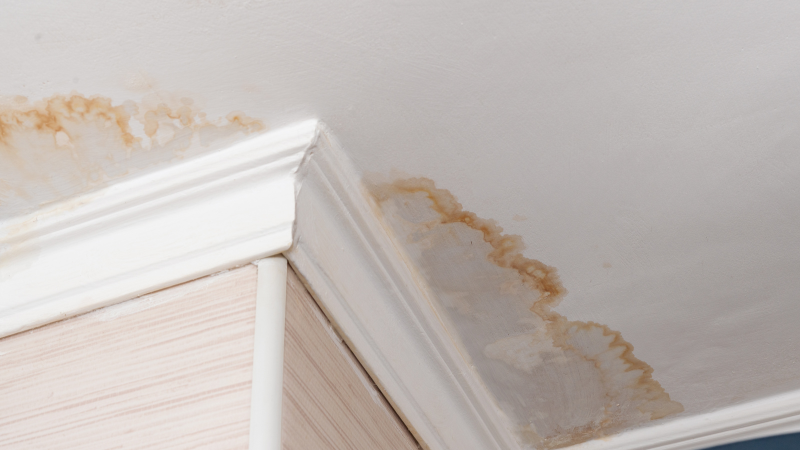We have uncovered the article about How to Repair and Prevent Bathroom Water Damage below on the net and accepted it made good sense to discuss it with you on my blog.

The bathroom is extremely vulnerable for moist accumulation and possible water damages as a result of the constant use water in it. This post uses easy evaluation techniques to aid identifying water damages threats.
The regular use water in the restroom makes it incredibly vulnerable for wet buildup as well as prospective water damage. By inspecting it consistently, you can minimize water associated damages.
The following collection of examinations is simple to perform and need to be done when in every three months in order to maintain your washroom in good shape and to prevent possible water damages caused by the bath tub, the shower, pipeline joints as well as plumbing, sinks, cabinets, and also the bathroom
Do not overlook performing these assessments and be thorough while executing them. Bear in mind that these simple examinations can save you a lot of cash by offering early indicators for water damage
Sinks as well as Cabinets
Sinks and cupboards are exposed to dampness as well as humidity everyday and are usually ignored. Inspect consistently under the sink as well as on the kitchen counter over it. Repair any type of drip in the trap as it may recommend drain issues. Look around the sink, sluggish draining pipelines may suggest a blocked drain. Change sink seals if they are cracked or loosened.
Bath tub and Shower
The shower as well as bathtub need unique focus and upkeep. Examine the tiles as well as change if cracked. Make sure that there is no missing cement in between the tiles. Check and also replace broken caulking at joints where the wall surfaces fulfill the floor or the tub. Obstructed drains pipes and pipes troubles will certainly prevent the tub from drying out and also may suggest severe troubles beneath the tub. Talk to a specialist immediately to stop structural damage. Take note of discolorations or soft locations around the bath tub wall surfaces as they might show an internal leak.
Plumbing
Signs for water damage are difficult to find given that the majority of pipelines are installed inside the walls.
Pay special interest to flooring as well as wall surfaces wetness and also discolorations as they might show an invisible plumbing problem. Check moisture levels in adjoining rooms as well.
The Bathroom
The bathroom is a susceptible water junction. Inspect the water lines as well as search for leaks around the bathroom seat, in the hose pipe, as well as under the water storage tank. If you discover any type of indications of wetness on the floor around the bathroom, check for leaks in the toilet rim and tank seals.
Be aware that hanging toilet dish antiperspirants raises the opportunities for obstructions.
Water Damage Signs In The Bathroom To Avoid Cleanup
Musty smell
This is one of the easiest signs to catch because musty smells are so odorous. The damp, earthy, moldy smell should be a big red flag. The smell will develop when moisture gets trapped in surfaces, and begins to facilitate mold growth. Leaking pipes under cabinets, inside walls, and behind shower fixtures will cause moisture to stay trapped and not dry, which will lead to mold growth and spread. As soon as you notice any musty smells in your bathroom, have it checked for hidden water damage and cleanup signs.
Visible mold
If the smell isn’t there to give it away, sometimes you will actually see mold growth. Finding mold in your bathroom is a serious problem, because mold is very harmful to your health. By the time mold growth is visible, it also means that water damage has already occurred and been present for some time. The only way the mold problem can be resolved is to find the source of the moisture and get it stopped. To safely and adequately remove mold, you need to have professionals handle the remediation. Do not waste any time in getting mold problems addressed, fixed, and sanitized so that you can protect you and your family from the many respiratory symptoms caused by mold exposure.
Damaged floors
Bathroom floors should be able to withstand some exposure to water while still remaining in good condition. However, when excess exposure or water leaks occur, they will begin to damage even the most water-resistant flooring. If you notice any cracking, bubbling, staining, or warping on your bathroom floors, there is probably a water leak somewhere causing the distortion. If you notice areas of the floor have become softer, or even have a spongy feeling, there is probably damage to the subfloor. Subflooring is typically made up of plywood. When plywood is exposed to water or moisture, it will absorb it. Once it has become saturated, the weight of the excess water will cause the wood to swell and soften. Check the floors in your bathroom frequently to catch any of these sings before they lead to damaged subflooring.
Changes on walls
When water leaks behind walls, it will cause changes in the drywall. Peeling plaster, blistering paint, and soggy wallpaper are all good indicators that excess water is building up behind the wall. Water leaking behind drywall will cause it to swell and be soft to the tough. If you start to notice gaps along the trim of your walls, or where tile meets the wall, it could also be a strong indicator that there is a leak behind the wall. Any changes, distortion, or damage on the walls should be evaluated as soon as you notice it to prevent further water damage and cleanup.

We had been shown that write-up on Common Causes of Water Damage in a Bathroom through someone on another domain. I beg you take the opportunity to share this blog if you enjoyed reading it. I praise you for your time. Visit us again soon.
Here